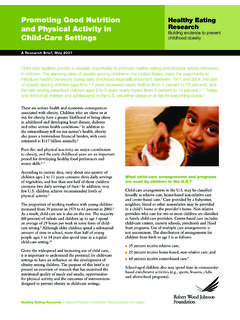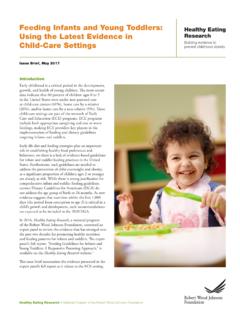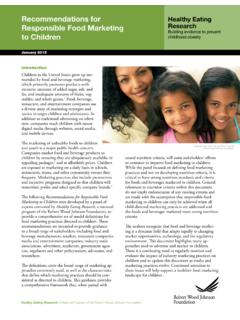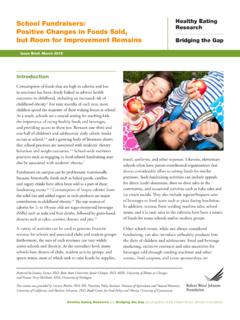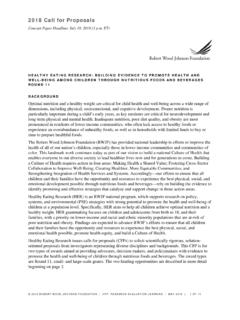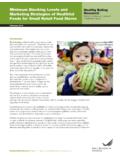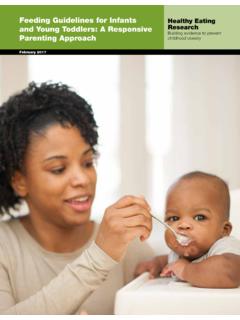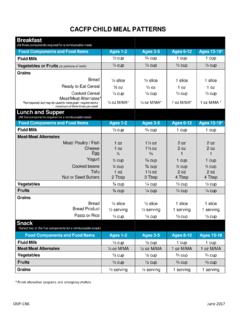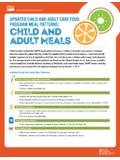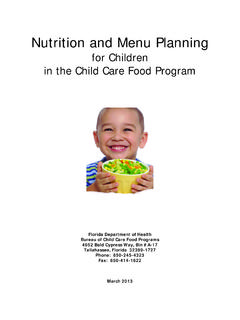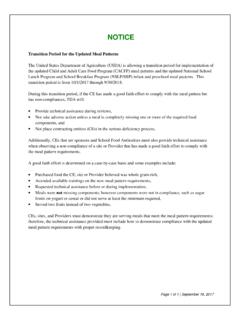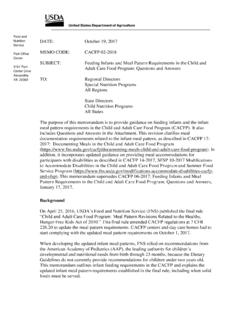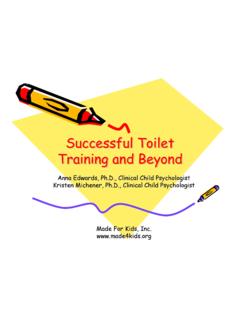Transcription of Early Care and Education Policies and Programs Healthy ...
1 Abstract In 2011, a Healthy Eating Research/Active Living Research (HER/ALR) Research Synthesis: Preventing Obesity Among Preschool Children: How Can child -care Settings Promote Healthy Eating and Physical Activity1 primarily reviewed the research surrounding opportunities to promote a Healthy diet and regular physical activity among preschool children. It also examined the outcomes of research interventions designed to prevent obesity in Early care and Education (ECE) settings. However, over the last six years, efforts to strengthen Policies , systems, and environments to promote health and prevent obesity have become more robust and widespread.
2 With improvements to federal and state regulations, state licensing requirements and quality initiatives, and an increased focus on comprehensive local wellness Policies , many child -care settings are strengthening their environments through practices and Policies to promote health. Furthermore, while rates of Early childhood overweight and obesity have been decreasing over the past several years, they are still high, and significant health disparities remain across ethnic and income groups. The Early childhood years are critical to the prevention of obesity and the development of Healthy dietary and physical activity habits, and the role of the child -care setting is becoming increasingly important in fostering these Healthy behaviors in young children.
3 Therefore, an updated research synthesis was needed. What follows is a comprehensive overview of changes to obesity-prevention Policies and evidence-based guidance that have occurred over the past five years and a review of the impact that these policy, systems, and environmental interventions have had in the ECE setting on promoting a Healthy diet, adequate physical activity, and reduced screen Childhood overweight and obesity affect percent of preschoolers and percent of infants and Early childhood has been identified as a critical period for the prevention of obesity and the development of protective behaviors such as Healthy dietary and physical activity.
4 4 Addressing the association between child -care attendance and risk of obesity in children5-7 is of critical importance, especially because an estimated 12 million infants and young children (0-5 years) in the United States spend time in some type of ECE setting (including Head Start, Pre-K, child -care centers and family child -care homes) each day,8 with the most common form of non-parental child -care provided by family, friends, and Review, December 2017 Healthy Eating Research A National Program of the Robert Wood Johnson FoundationEarly Care and Education Policies and Programs to Support Healthy Eating and Physical Activity: Best Practices and Changes Over TimeResearch Review.
5 2010-2016 Healthy Eating ResearchBuilding evidence to prevent childhood obesity 2015 Flynn Larsen2 Early Care and Education Policies and Programs to Support Healthy Eating and Physical Activity | December 2017 While rates of Early childhood overweight and obesity are still high, they are beginning to decline in some segments of the ,10 Nationally, obesity decreased significantly among 2- to 5-year-old children between 2003-2004 and 2013-2014,2 and among low-income preschool-aged children between 2008 and Most recently, data from the Centers for Disease Control and Prevention (CDC) provide evidence of further improvements, with obesity rates among low-income 2- to 4-year-old participants in the Special Supplemental Nutrition Program for Women, Infants, and Children (WIC)
6 , going from percent in 2010 to percent in Similar declines were observed among all five major racial/ethnic groups and among children served by 34 of the 56 WIC State Agencies between 2010 and Despite these improvements, significant health disparities remain and improvements have not been seen equally across all ,13 Black and Latino youths have substantially higher rates of overweight and obesity than do their White and Asian peers and this disparity exists among both boys and girls throughout Among preschoolers (2-5 years) specifically, Latinos are three times as likely and Blacks twice as likely to be obese as the last six years, efforts to strengthen Policies , systems, and environments to promote health and prevent obesity have become more robust and During this time, the federal policy landscape has changed significantly, with legislative and regulatory updates to nearly every federal policy and program that touches child -care Programs .
7 Additionally, changes to strengthen state regulations, state licensing requirements and quality initiatives, and local wellness Policies are all impacting practices in child -care However, the impact that these changes have had on child health is not known. The goal of the current research review is to provide the most up-to-date information on the impact of these changes in Policies , systems, and environments aimed at promoting a Healthy diet, increasing physical activity, and reducing screen time in young children in the ECE first identify relevant articles, the research team reviewed 11 systematic research review articles (Appendix A) published between 2010 and 2016 on obesity prevention interventions and outcomes in ECE settings.
8 Any individual peer-reviewed articles cited in these reviews that fit the inclusion criteria were kept for more detailed review. Articles were included if they were published between 2010 and 2016 and were original, peer-reviewed research articles conducted with samples in a child -care setting. Additional PubMed and Google Scholar searches were then conducted using combinations of the keywords child -care or Early care and Education with obesity policy, nutrition, nutrition Education , physical activity, and built environment. Researchers also conducted a forward search for articles that cited the original HER/ALR 2011 research review and met the inclusion criteria, yet were not identified through other means.
9 In all, 89 articles were identified and reviewed; of those, 79 met the inclusion criteria. Table 1 summarizes key details of the 42 intervention studies identified in this sample, including intervention design, measures, and results that are included in this review. Additional observational studies, program evaluations, and cross-sectional studies in the sample are discussed within the in Obesity Prevalence among WIC Participants Aged 2 4 Years, by WIC State Agency United States, 2010 2014 Significant decrease No change Significant increaseEarly Care and Education Policies and Programs to Support Healthy Eating and Physical Activity | December 2017 3 For the policy analysis, researchers reviewed federal legislative activities and federal register notices for Programs in ECE settings that address nutrition, physical activity, screen time, or other health-related areas.
10 Researchers also analyzed policy recommendations including those from the American Academy of Pediatrics (AAP) and the National Academy of Medicine (NAM; formerly the Institute of Medicine); state regulatory analyses, including those from the National Resource Center for Health and Safety in child Care and Early Education (NRC), the Centers for Disease Control and Prevention (CDC), and the Public Health Law Center; a health impact analysis from the Pew Charitable Trusts; and analyses of state quality rating improvement systems (QRIS) from the Nemours Foundation and CDC. This helped to inform the Key Changes to Policies and Evidence-based Guidance Impacting the ECE Setting section below.
